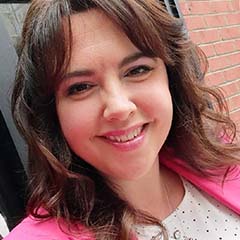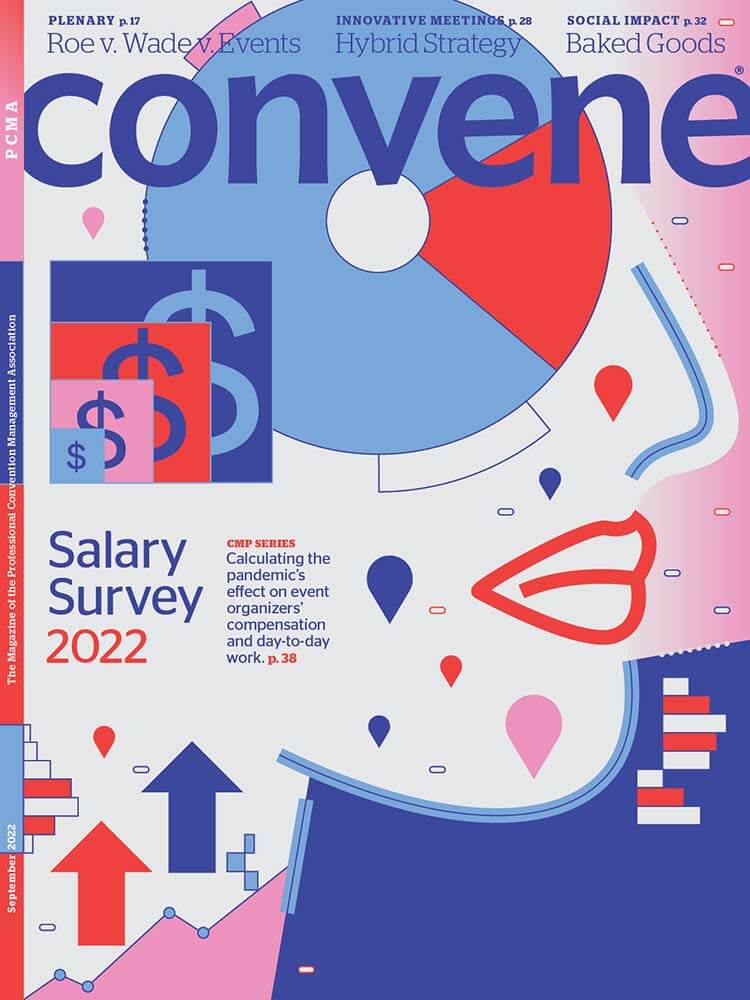
Dana Johnston, CMP, asked an important question about each of the tasks she had to complete each week: Can someone else do this?
In May 2020, Dana Johnston, CMP, was working as senior manager, convention operations and meetings, for the Infectious Diseases Society of America (IDSA) when the association made the decision to make
its annual meeting, IDWeek, virtual. That left Johnston, who manages industry relationships between IDSA and more than 150 pharmaceutical, diagnostic, and health-care companies, with “a very short window to pivot all of these industry partners to a virtual event,” she told Convene.
IDWeek is held jointly with four other medical associations, and there were many open questions, Johnston said, including how to create virtual booths, customer events, and advertising for partners. “I had to figure all of that out really fast and then articulate it in a way that would retain the industry partner dollars for the partner associations.”
As event deadlines approached, Johnston found herself working 12 hours a day, plus additional hours on weekends. At that time, “I felt like the whole world was doing it,” she said. In the meetings industry, “we had either lost our jobs or we were working really, really hard — it was one or the other.” But in 2021, as IDWeek approached, Johnston could see the number of hours she worked ticking upwards. Johnston knew that working 70-hour weeks “wasn’t what I wanted for my lifestyle,” she said, “because I had been burned out before in my early twenties.
“I think you have to make a decision,” Johnston said. “Ask yourself, ‘What am I willing to give of myself? And what is the price that it pays for my mental health, my family, and my relationships, and so forth?’ … And then you need to really articulate that to your manager or your leader and get some help getting additional resources.”
Acting on the advice of a mentor, Johnston began by writing everything down about her upcoming responsibilities and tasks, along with the hours she expected to spend on them in a spreadsheet. “Talking about your problems doesn’t get you to a solution,” the mentor had told Johnston. “Leadership needs to see it in black and white: These are the projects, these are the number of hours.”

I think you have to make a decision. Ask yourself, ‘What am I willing to give of myself? And what is the price that it pays for my mental health, my family, and my relationships, and so forth?’ ”
In a spreadsheet she named “Tasks to Finish Line,” Johnston sorted her responsibilities by priority and category, calculating the amount of time they would take to accomplish, and answered this question about each: Can someone else do this? She concentrated on identifying those tasks that not only others could do but that also took Johnston away from her central work purpose — working on partnerships. Johnston’s ability to focus more time on maintaining relationships with industry partners benefited the association, “because that’s where so much of our revenue comes from,” she said.
Describing her tasks in detail also helped Johnston clarify for herself the amount of time it would take to accomplish everything she had to do — when she added it together, she found that it would take 68 hours a week for her to get everything done. Johnston suggested a plan to redistribute some of her workload by passing “chunks” along to others whose skills were aligned with the tasks.
Fortunately, her supervisors responded positively, Johnston said. “We just really pulled together and asked: ‘Who has a little bit of extra time on their plate?’” In addition to team members, her employer also found support for Johnston in other departments and through contractors, she said. One of the added benefits of the exercise, she said, was that the team “felt like we solved a problem together.” Johnston oversaw the redistributed work to make sure that everything “got done in the way that it needed to get done, to make everybody happy and make us have a successful event,” she said.
“I think where people struggle, especially with burnout in meetings and events, is they don’t advocate for themselves,” Johnston said. If you do advocate and the answer is “everyone is overloaded,” it’s a signal to get outside help — “or to get out the red marker,” she said, “and get rid of some programs.”
There’s one more sign of the success of Johnston’s strategy — this past July, she was promoted to associate director for convention operations and corporate relations at ISDA. “Rebalancing my workload had a positive effect on my career,” Johnston said, “I had the opportunity to stretch my training, supervising, and coaching skills while maintaining a healthier work-life balance. And I could perform my essential duties at a higher level.”
Barbara Palmer is deputy editor at Convene.

Salary Survey 2022
The 2022 Salary Survey, conducted in late July with nearly 350 planners participating, is Convene’s September issue cover and CMP Series story. Find links to all the articles from the story package below.
